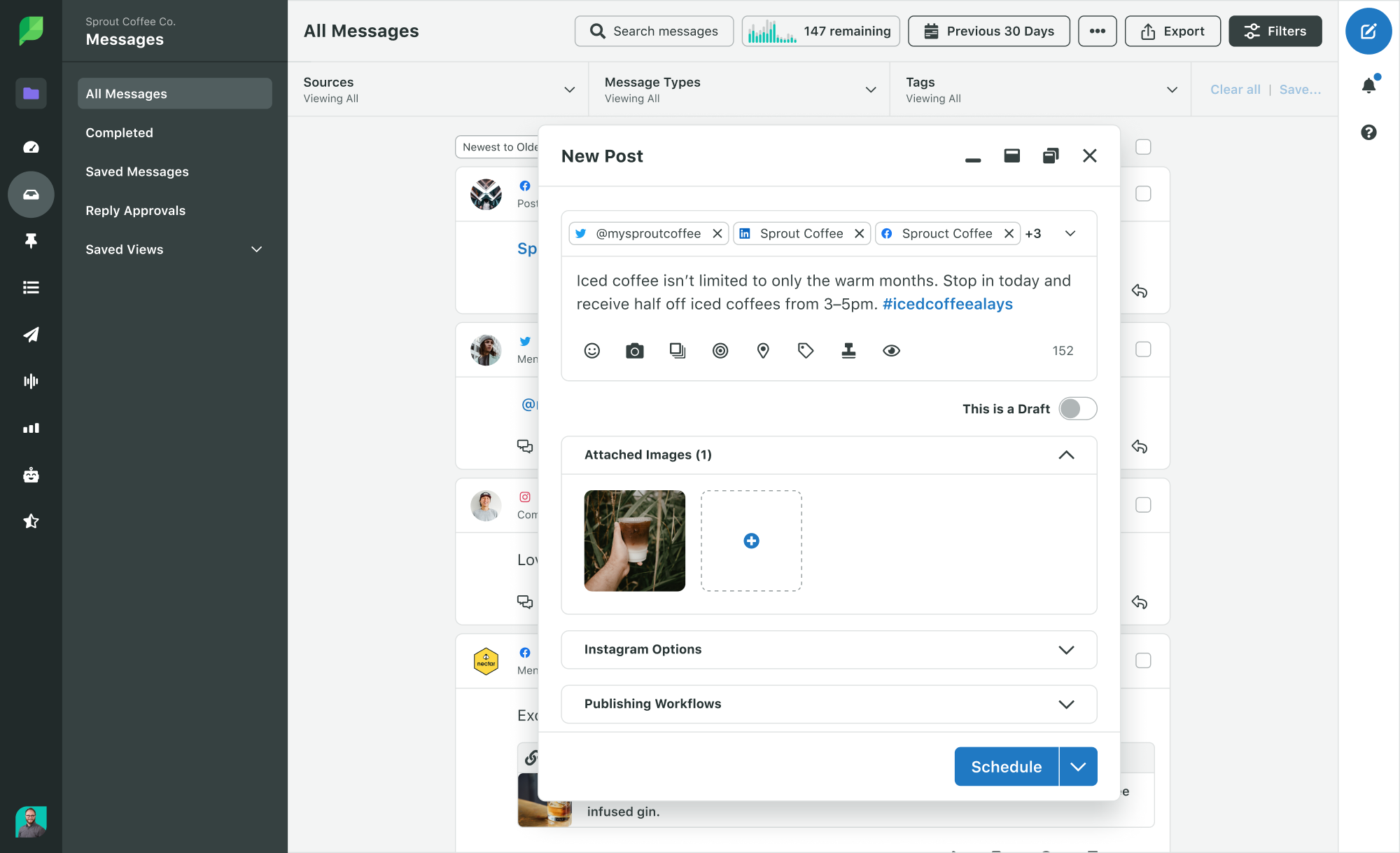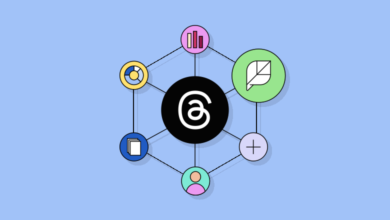What is an API and why does it matter for social media?
When you research marketing tools, you may have noticed companies boasting about the robust APIs of their tools. They might talk about how an API makes it easier to accomplish certain marketing tasks or transfer data from one app to another. So now you are wondering what is an API and why should you care about it. In this guide, we take you an in-depth look at what an API is and why it matters to social media.
table of contents
- What is an API?
- What are the different types of API?
- How are APIs and social media related?
- Why are APIs important?
- How APIs add a layer of security
- 5 things you should know about API
What is an API?
API stands for Application Programming Interface. It is a software interface that enables two applications to communicate with each other. API acts as an intermediary for different software applications to share data with each other.
How APIs work: a practical example
To use an analogy here, we’ll compare it to ordering a drink at a bar. When you step into the bar, you get a menu with a list of drinks. To make it look like an API, there is an existing convention you can follow (ie, the bartender) to state your order and receive the drink.
The menu, as you can see, is the interface. All drinks on the menu are what the bartender has agreed to serve. When you ask for a certain drink on the menu, you get it. But say you order something off the menu, like a vodka martini instead of a gin martini. The bartender won’t be able to provide it because it’s not something they’ve agreed to serve.
Let’s say you want a gin martini delivered to your home. You call the delivery service and you order the martini that appears on the menu. When you order it, someone will tell the bartender your order, the bartender will make the martini, and then someone will deliver it to your house. This is an example of an additional service (delivery) built on an “API”.
To relate it back to software, an API can help one application retrieve specific types of data from another. If the API doesn’t support certain types of data, it won’t be able to facilitate retrieval of that “off-menu” data.
How have APIs evolved
With the greater adoption of APIs, they have evolved to provide more seamless integration. Modern APIs follow standards that are developer friendly and easy to use. As a result of better standardization, they support better security, administration, and documentation.
In addition, they are overproduced. Many APIs today cater to specific audiences such as mobile developers and web developers. Now that we are entering the cloud era, cloud computing has helped transform API development and deployment.
There are many types of API
Open API
These are APIs that companies make available to the public, such as the Google API and WordPress API. Anyone can use them without having to submit their app for approval.
Partner API
These types of APIs require specific rights or licenses and are only available to specific parties. The Airbnb API falls into this category.

image Source
internal api
These are private APIs that companies develop to use in their internal systems. They allow those different systems to work together to increase productivity.
Composite API
These are the combination of different API requests in a single API call. This helps to improve efficiency and save on data usage.
How are APIs related to social media marketing?
All major social media platforms have an API. You can use these APIs to build on them and improve the user experience. Additionally, many social media marketing and management platforms use these APIs to integrate the experience. This means that they can enable users to perform certain tasks in one place.
Sprout Social, for example, uses the APIs of major social media networks to offer management capabilities. This way, you can use the platform to schedule and publish posts to all of these social networks. You can also keep track of and reply to your messages and comments in one place. Having a single dashboard adds convenience and is just one of the many ways APIs power social media marketing.

Twitter API
Twitter provides several API endpoints that allow you to complete certain tasks on the platform. For example, the Retweet API lets you retweet posts from other users, while the Ads API lets you create advertising campaigns. Although the API is free to use, you will need to sign up for paid versions for higher levels of access.
youtube api
The YouTube API is free to use and allows you to add YouTube functionality to your website. This will enable users to play videos on your website or application. They can also complete other tasks such as searching for videos, uploading videos, and subscribing to channels.

image Source
Instagram API
There are several Instagram APIs that you can use for free to extend the capabilities of your app. You can use the API to let users manage their Instagram messages and posts from within your app. The Instagram Graph API lets users access valuable data from their business and creator accounts.
LinkedIn API
LinkedIn offers several APIs that you can currently access for free. These APIs allow you to enhance the sign-in and content-sharing experience. You can also find APIs to help with marketing, sales, and recruiting.

image Source
facebook api
Facebook provides several APIs and SDKs that are free for developers to use. These APIs will allow users to search, create and publish posts, manage ads, and many more.
tiktok api
TikTok gives you access to a number of toolkits that you can use to enhance the user experience. For example, Login Kit lets you set up your app so that users can quickly and securely sign in using their TikTok credentials. You can also find API kits for sharing videos, embedding videos, adding green screens, and displaying creators’ profiles.

image Source
whatsapp api
WhatsApp provides three different types of APIs for businesses. This includes the Cloud API, the On-Premises API, and the Business Management API. You can use these APIs to customize your business profile, send automated messages, and respond to your customers. The WhatsApp API for Businesses is available on a freemium basis, with fees charged on a per-interaction basis.
Salesforce API
The Salesforce Data API consists of four different APIs—REST, SOAP, Bulk, and Streaming. These allow you to make changes to your Salesforce data. You can use API to customize page layout or develop custom tools to enhance user experience.
Why are APIs important to you?
It’s safe to say that your entire online experience runs on APIs. They help in simplifying tasks without the need to switch between multiple applications. It provides benefits not only for regular internet users but also for marketers and industry professionals. Let’s find out why APIs are so important to you.
APIs streamline your processes
The API enables you to connect multiple applications and create a more streamlined process. Instead of switching between four different applications, you will be able to use one software to access all four.
As such, APIs are especially useful for social media managers and marketing professionals. The multiple platforms they use integrate with each other, allowing them to accomplish a myriad of tasks from a single dashboard.
Sprout Social Smart Inbox is a classic example of this. Before, you logged into Facebook and Twitter separately, checking messages, running search terms, and replying to tagged posts. Now, thanks to the network’s API, you can see it all in one view, cutting down on standby time.

APIs improve connectivity and speed up everyday tasks
APIs allow different applications to communicate seamlessly. As a result, they create convenience in our daily lives, even when we don’t realize it.
It is with the help of the API that we can quickly check the weather on our phones and decide whether to bring an umbrella or not. We’ve also seen a rapid growth in convenient mobile applications that make it easier to get things done. This can be anything from ordering groceries online to tracking your budget.
Furthermore, APIs have enabled the emergence of the Internet of Things (IoT). This has created better connectivity between the devices we use in our daily lives. For example, we can now monitor our door from miles away or adjust the thermostat from the comfort of our sofa.
Business expands with APIs
Offering an API can help you expand the potential of your business. A business can provide only so many resources. By having an API available, with developers eager to build on them, they can expand their offering to more people.
A good example is software like Mint, which can connect to multiple banks and compile it into one area. A bank’s main offering is depositing your money and recording your credit card expenses. The bank allows Mint to connect with its API, so that you can manage your money better and consequently remain a customer with the bank.
How APIs add a layer of security
APIs implement various security practices so that applications can transfer information securely. This usually involves adding another layer of security between the sensitive data and the client.
With the help of the API, you can be sure that the server never has full access to your device’s data. Instead, different apps and devices will share only the data they need.
Additionally, users also have control over the data they want to share. For example, you can choose to decline a website’s request to access your physical location through the Location API.
5 things you should know about API
In summary, here are five takeaways for the API.
- Developers work with APIs to build software and apps. It is rare for you, the end user, to interact directly with the API.
- APIs serve as a gate, allowing companies to selectively share information while keeping unwanted requests out.
- APIs can make your life a little easier. When airlines share data about flights and prices, travel aggregation sites can compile them and help you compare.
- Businesses run on APIs. Sprout is an example of social software that relies on the API of a social media network.
- If you are using a third-party app to manage your social media, it may not be the app’s fault that a feature is unavailable. It is more likely that the network does not have this as part of its API.
For social media managers, the API has made it easy to manage multiple social profiles using one tool. Learn more about how to take advantage of them and optimize your social media management strategy.
What is the Post API and why does it matter for social media? The post appeared first on Sprout Social.






